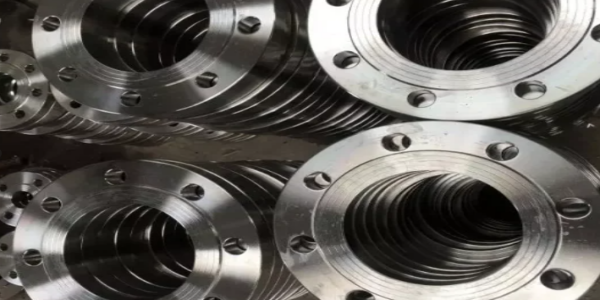What is a flange?
Flange, also called flange flange disk or flange. It is mainly used for the connection between pipe ends and the sealing of pipes and valves, Casing and Tubing, pipes and equipment, etc. Because it is widely used between these equipment and pipes, the two planes are connected together with bolts, and the sealing part is called flange. Flange connection is to fix two pipes, pipe fittings or equipment on a flange plate first, add flange pads between the two flange plates, and fasten them together with bolts to complete the connection. Some pipe fittings and equipment already come with flanges, which are also flange connections. There are also flanges used on the inlet and outlet of equipment for the connection between two devices, such as reducer flanges. Flange connection or flange joint refers to a detachable connection in which flanges, gaskets and bolts are connected to each other as a set of combined sealing structures. Pipe flange refers to the flange used for piping in the pipeline device, and when used on equipment, refers to the inlet and outlet flange of the equipment.

How to use flange?
There are holes in the flange, and the bolts tightly connect the two flanges. The flanges are sealed with gaskets. Flanges are divided into threaded connection (threaded connection) flanges, welding flanges and clamping flanges. Flanges are always used in pairs, low-pressure pipelines can use wire flanges, and welding flanges can be used with pressures above four kilograms. Add a sealing gasket between the two flanges and tighten them with bolts. Flanges of different pressures have different thicknesses and use different bolts. When water pumps and valves are connected to pipelines, some parts of these equipment are also made into corresponding flange shapes, also called flange connection. Any connecting parts that are closed together by bolts on the two planes at the periphery are generally called "flanges", such as the joints of ventilation ducts. This kind of parts can be called "flange parts".
The function and use of flange
1. Connect the pipes
Flange is an important component for connecting pipelines. It can connect casing pipe with other equipment (such as valves, pumps, etc.) to form a complete pipeline system. There are two ways to connect flanges, one is welding flange and the other is bolt flange. For large pipes, bolted flanges are generally used, and for small pipes, welded flanges are used.
2. Loading pressure
In the pipeline system, the fluid pressure transmitted is relatively high, so components that can withstand both the fluid pressure and external force in the pipeline are required. The flange is a component that can withstand the pressure in the pipeline system through the design of the stress surface and the material selection of the gasket, thereby ensuring the normal operation of the pipeline.
3.Prevent leakage
In pipeline systems, leakage is a serious quality problem, and the presence of flanges can effectively prevent leakage. The advantage of the flange connection method is that when using sealing gaskets, air tightness can be ensured, pressure loss can be avoided, and material leakage can also be effectively prevented.
Flange usage scenarios, such as BOSSCHUCK's screw chuck, do not need to tighten the handle and rely on flange rotation to clamp the workpiece. It is often used in inspection, test platforms and other occasions where it is inconvenient to use the locking handle.
Conclusion
By discussing the role and use of flanges, we can see the importance of flanges in pipeline systems. Its role is far more than connecting pipelines, it can also carry pressure, prevent leaks, etc. The design and manufacturing of flanges are also very important and must be carried out in strict accordance with relevant standards and specifications to ensure safe and stable use.






 English
English Español
Español بالعربية
بالعربية











 Phone :
Phone :  Whatsapp :
Whatsapp :  Email :
Email : 


